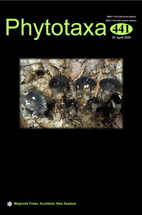Abstract
This research is the first comprehensive analysis of the intrageneric relationships of Actiniopteris and Onychium based on original data including spore morphology, phylogeny and phylogeography. Actiniopteris and Onychium are members of the large subfamily Pteridoideae of the family Pteridaceae. The Pteridaceae family is considered one of the most taxonomically confusing families due to its representatives high level of polymorphism.
We used an interdisciplinary approach to study the “Onychium clade”: 13 taxa were studied using scanning electron microscopy (SEM) to characterize the morphology and morphometry of spores; 14 taxa were studied from a phylogenetic perspective, including character evolution and ancestral character state reconstructions; 15 taxa of “Onychium clade” were studied using herbarium data (B, P, PE, LE, VLA, TI, KYO, ALTB and TK) according to global botanical and geographical zones.
As a result of this integrated analysis, we established a deep divergence of the taxa O. tenuifrons and O. siliculosum from the main composition of the genus Onychium and the division the genus Actiniopteris into two clades: A. radiata–A. semiflabellata and A. australis–A. dimorpha. We found that representatives of Actiniopteris and Onychium had originated in a common African-Indo-Malesian area. The “Onychium clade” center of diversity is the Indian Region, which is experiencing high levels of human impact, leading to disjunctions among the studied taxa.

